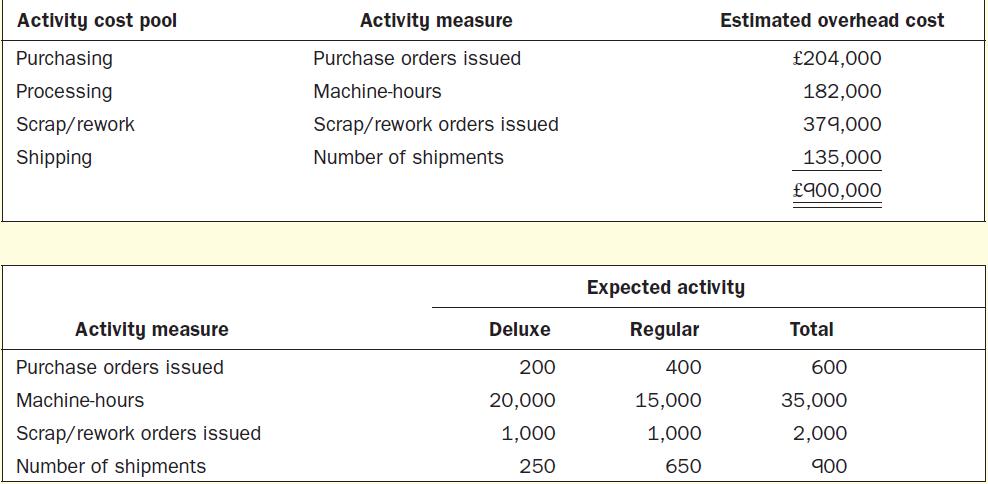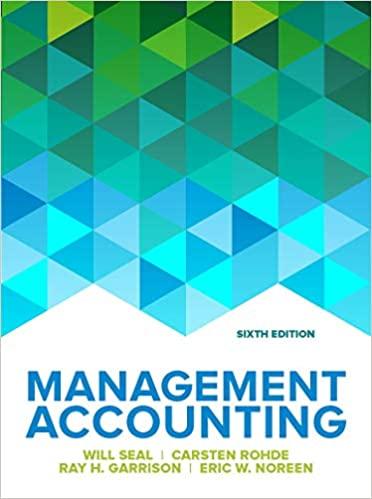This chapter emphasizes the use of activity-based costing in internal decisions. However, a modified form of activity-based
Question:
This chapter emphasizes the use of activity-based costing in internal decisions. However, a modified form of activity-based costing can also be used to develop product costs for external financial reports. For this purpose, product costs include all manufacturing overhead costs and exclude all non-manufacturing costs. This problem illustrates such a costing system. Siegel Company manufactures a product that is available in both a deluxe model and a regular model. The company has manufactured the regular model for years. The deluxe model was introduced several years ago to tap a new segment of the market. Since introduction of the deluxe model, the company's profits have steadily declined and management has become increasingly concerned about the accuracy of its costing system. Sales of the deluxe model have been increasing rapidly.
Manufacturing overhead is assigned to products on the basis of direct labour-hours. For the current year, the company has estimated that it will incur L900,000 in manufacturing overhead cost and produce 5,000 units of the deluxe model and 40,000 units of the regular model. The deluxe model requires two hours of direct labour time per unit, and the regular model requires one hour. Material and labour costs per unit are as follows:
Required
1. Using direct labour-hours as the base for assigning overhead cost to products, compute the predetermined overhead rate. Using this rate and other data from the problem, determine the unit product cost of each model.
2. Management is considering using activity-based costing to apply manufacturing overhead cost to products for external financial reports. The activity-based costing system would have the following four activity cost centres:
Using the simplified approach described at the end of the chapter, determine the predetermined overhead rate for each of the four activity cost pools.
3. Using the predetermined overhead rates you computed in Requirement 2 above, do the following:
(a) Compute the total amount of manufacturing overhead cost that would be applied to each model using the activity-based costing system. After these totals have been computed, determine the amount of manufacturing overhead cost per unit of each model.
(b) Compute the unit product cost of each model.
4. From the data you have developed in Requirements 1–3 above, identify factors that may account for the company’s declining profits.
Step by Step Answer:

Management Accounting
ISBN: 9780077185534
6th Edition
Authors: Will Seal, Carsten Rohde, Ray Garrison, Eric Noreen





